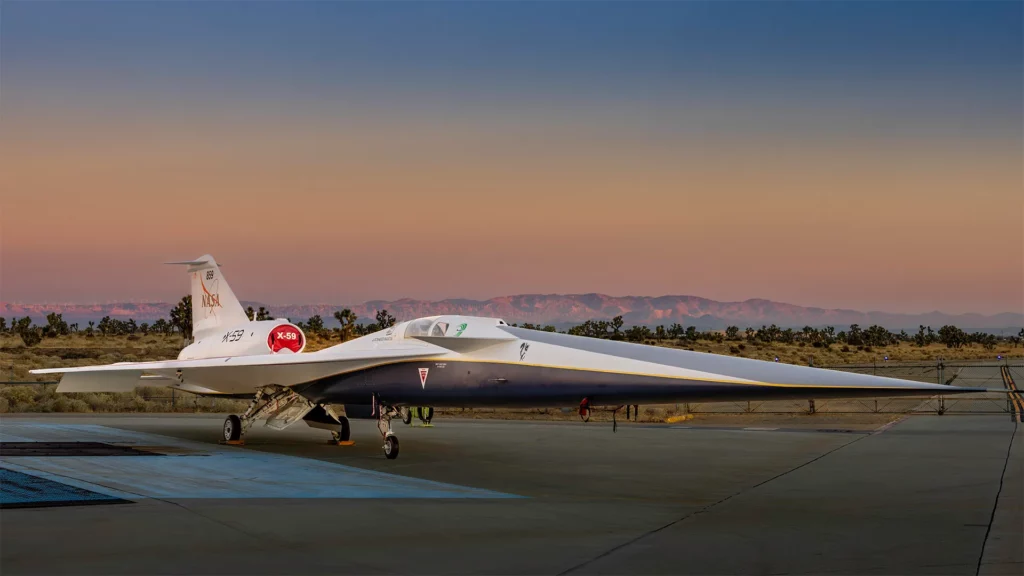The X-59 QueSST (Quiet Supersonic Technology) aircraft is a cutting-edge project developed by NASA in collaboration with Lockheed Martin was just rolled out, and aims to address the environmental impact of supersonic flight. Sustainability is a key focus in the design and development of the X-59, aiming to reduce the sonic boom associated with supersonic travel and minimize its impact on the environment.
One of the primary sustainability features of the X-59 is its low-boom design. Traditional supersonic flights produce loud sonic booms when breaking the sound barrier, which can disturb communities and wildlife. The X-59, however, is engineered to create a softer thump-like noise, significantly reducing the disturbance caused by sonic booms. This design innovation is crucial for the future viability of supersonic air travel, as it opens up the possibility of flying over populated areas without causing excessive noise pollution.
In addition to its low-boom design, the X-59 incorporates advanced aerodynamics to enhance fuel efficiency and reduce overall carbon emissions. By optimizing the aircraft’s performance, NASA and Lockheed Martin aim to make supersonic travel more environmentally friendly. With less drag, the aircraft is able to use less thrust, and therefore, less fuel.
Furthermore, the X-59 project serves as a testing ground for future technologies that can be applied to commercial supersonic aircraft. By fostering innovation in sustainable aviation, the X-59 contributes to the ongoing evolution of air travel towards more eco-friendly and efficient solutions. As the aviation industry continues to explore ways to reduce its carbon footprint, the X-59 stands out as a pioneering example of sustainable supersonic technology.
